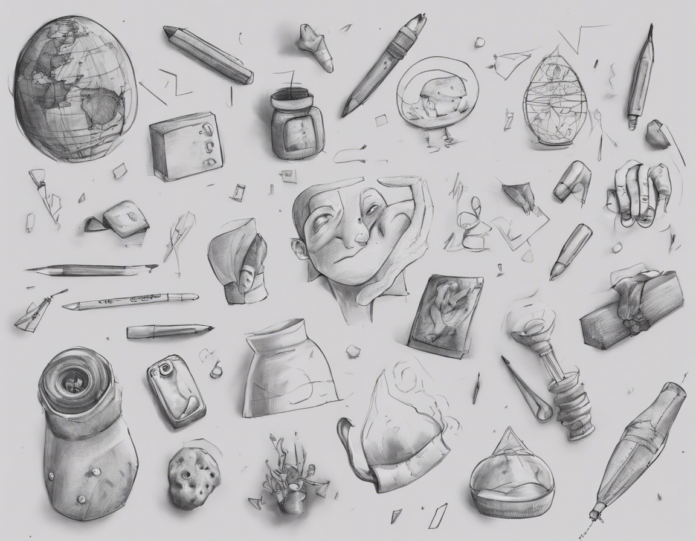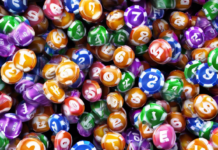Drawing is an enriching art form that allows individuals to express their creativity and thoughts through illustrations. Whether you are a novice or an experienced artist, finding inspiration for your next drawing can sometimes be challenging. If you are looking to kick start your drawing journey or reignite your creative spark, here are 20 creative drawing ideas for beginners to help you get started.
Understanding Basic Shapes and Forms
Drawing basic shapes and forms is a fundamental skill that every artist should master. Practice drawing circles, squares, triangles, and cylinders to understand how shapes interact and form more complex structures.
Creative Twist:
Try combining different shapes to create unique objects such as a circle on top of a triangle to make a playful hat or a cylinder intersecting with a cube to form a futuristic building.
Still Life Drawing
Still life drawing involves sketching objects that are typically stationary, like fruits, flowers, or household items. This exercise helps you improve your observation skills and understand light and shadow.
Creative Twist:
Arrange everyday objects in a visually appealing way and experiment with different lighting conditions to create dramatic shadows and highlights in your composition.
Portraiture
Capture the likeness of a person through portrait drawing. Start by sketching facial features like eyes, nose, and mouth, focusing on proportions and details.
Creative Twist:
Instead of drawing traditional portraits, try creating a caricature or a portrait with exaggerated features to add a touch of humor to your artwork.
Nature Studies
Drawing nature scenes such as landscapes, trees, or animals can be a relaxing and inspiring practice. Take a sketchbook outdoors and explore the beauty of the natural world.
Creative Twist:
Experiment with different textures and patterns found in nature, like the intricate veins of a leaf or the rough bark of a tree, to add depth and realism to your drawings.
Abstract Art
Let go of traditional guidelines and create abstract compositions using shapes, colors, and lines. Abstract art allows you to express emotions and ideas in a non-representational way.
Creative Twist:
Combine geometric shapes with organic forms, use bold and vibrant colors, and play with negative space to create visually stimulating abstract artworks.
Pattern Design
Drawing patterns can be a meditative and enjoyable practice. Create intricate patterns inspired by geometry, nature, or cultural motifs.
Creative Twist:
Experiment with different media like pens, markers, or watercolors to add depth and variety to your patterns. Explore symmetrical and asymmetrical designs to enhance visual interest.
Character Design
Unleash your imagination by creating unique characters with distinct personalities. Develop their traits, clothing, and backstories through your drawings.
Creative Twist:
Mix and match different elements from various sources of inspiration to design fantastical creatures or quirky individuals. Add props and accessories to bring your characters to life.
Concept Sketching
Sketching concepts and ideas is a great way to brainstorm and visualize your thoughts. Whether it’s a product design, architectural concept, or scene layout, quick sketches can help develop your concepts further.
Creative Twist:
Use thumbnails sketches to explore multiple concepts rapidly. Focus on capturing the essence of your idea with simple and concise linework before refining your concept into a detailed drawing.
Building Perspective Skills
Understanding perspective is essential for creating realistic and immersive drawings. Practice drawing objects in one-point, two-point, and three-point perspective to master spatial accuracy.
Creative Twist:
Challenge yourself by drawing unconventional perspectives or distorted viewpoints to add dynamism and interest to your compositions. Experiment with foreshortening and exaggeration for dramatic effects.
Collaborative Art
Engage in collaborative drawing projects with friends or fellow artists. Take turns adding elements to a shared artwork, allowing each participant to contribute their style and ideas.
Creative Twist:
Set specific themes or constraints for your collaborative projects to push your creativity further. Experiment with different art styles or techniques to create a harmonious yet diverse piece.
Mood Boards
Create visual mood boards by combining images, colors, textures, and words that inspire you. Mood boards can help you gather ideas, set the tone for your artwork, and spark creativity.
Creative Twist:
Use a variety of materials such as magazine cutouts, fabric swatches, digital images, and handwritten notes to create tactile and dynamic mood boards. Let your boards evolve and inspire new drawing ideas.
Object Transformation
Explore the concept of object transformation by morphing everyday objects into unexpected forms. Play with size, shape, and context to create surreal and imaginative drawings.
Creative Twist:
Combine unrelated objects to form a cohesive and imaginative scene. For example, turn a teapot into a spaceship or a lamp into a magical staff. Embrace the whimsical and unexpected in your transformations.
Storyboarding
Practice storyboarding by creating sequences of drawings that narrate a visual story or depict a series of actions. Storyboarding is essential for planning comics, animations, and narratives.
Creative Twist:
Experiment with different camera angles, shot compositions, and pacing to enhance the storytelling in your boards. Focus on conveying emotions and movement through your characters and scenes.
Negative Space Drawing
Focus on drawing the spaces around objects rather than the objects themselves. Negative space drawing helps improve your observational skills and perception of shapes and relationships.
Creative Twist:
Explore complex arrangements of objects and their negative spaces to challenge your perception. Practice drawing both the positive and negative space to create intriguing and dynamic compositions.
Cross-Hatching Techniques
Experiment with cross-hatching, a shading technique using intersecting lines, to add depth and dimension to your drawings. Practice varying the spacing and angle of your lines for different effects.
Creative Twist:
Combine cross-hatching with stippling (dots), contour hatching (curved lines), or scumbling (scribbled lines) to create intricate textures and shading. Play with light and shadow to make your drawings pop.
Color Exploration
Dive into the world of color and experiment with different color schemes, combinations, and palettes. Understand color theory, temperature, and harmonies to enhance your drawings.
Creative Twist:
Create mood boards or color swatches to explore various color schemes like monochromatic, complementary, analogous, or triadic. Experiment with color gradients and overlays to add depth and vibrancy to your artworks.
Mixed Media Art
Combine traditional and digital media to create mixed media artworks. Experiment with blending pencil drawings with digital painting, collage elements, or texture overlays for unique effects.
Creative Twist:
Explore unconventional materials such as coffee stains, newspaper clippings, fabric scraps, or found objects to incorporate into your drawings. Embrace imperfections and happy accidents in your mixed media pieces.
Expressive Gesture Drawing
Practice gesture drawing to capture the fluidity and movement of subjects in quick, energetic sketches. Focus on capturing the essence and motion of your subjects rather than details.
Creative Twist:
Set a timer for short intervals (e.g., 30 seconds to 2 minutes) to challenge yourself to sketch quickly and intuitively. Experiment with dynamic poses, expressive lines, and varied mark-making to convey energy and emotion in your drawings.
Reflective Self-Portraits
Create self-portraits that reflect your emotions, thoughts, or experiences. Use your drawings as a form of self-expression and introspection, exploring different styles and interpretations of yourself.
Creative Twist:
Experiment with abstract self-portraits, symbolic representations, or metaphorical interpretations of yourself. Explore different facial expressions, poses, and settings to convey mood and storytelling in your self-portraits.
Frequently Asked Questions (FAQs) about Drawing Ideas for Beginners
1. How can I overcome creative block and find inspiration for my drawings?
To overcome creative block, try exploring new environments, mediums, and subjects. Look for inspiration in everyday objects, nature, art books, online galleries, or art challenges. Engage in creative exercises like doodling, mind mapping, or word associations to spark new ideas.
2. Are there specific drawing exercises or prompts that can help me improve my skills as a beginner?
Yes, practicing basic drawing exercises like contour drawing, blind contour drawing, gesture drawing, and perspective drawing can help improve your observational skills, hand-eye coordination, and understanding of form. You can also try themed drawing prompts or challenges like Inktober, Drawlloween, or daily sketch prompts to hone your creativity and consistency.
3. How important is it to experiment with different art styles and techniques as a beginner artist?
Experimenting with different art styles and techniques is essential for your artistic growth and exploration. Trying out various styles, mediums, and approaches can help you discover your artistic preferences, strengths, and areas for development. Embrace diversity in your art practice and be open to learning from different sources of inspiration.
4. What are some digital tools or apps that beginners can use to enhance their drawing experience?
There are several digital tools and apps available for beginners to explore drawing digitally. Popular options include Procreate, Adobe Fresco, Autodesk SketchBook, Adobe Illustrator Draw, and Clip Studio Paint. These tools offer a range of features such as layers, brushes, textures, and color palettes to enhance your digital drawing experience.
5. How can I stay motivated and consistent with my drawing practice as a beginner artist?
To stay motivated and consistent with your drawing practice, set achievable goals, create a regular drawing schedule, and track your progress over time. Join art communities, classes, or workshops to connect with fellow artists, seek feedback, and gain inspiration. Celebrate small achievements, experiment with new techniques, and embrace the learning process as part of your artistic journey.
Embark on your drawing adventure with these creative drawing ideas for beginners and let your imagination soar. Remember, drawing is not just about creating art but also about self-expression, exploration, and growth as an artist. Embrace the process, experiment with new ideas, and enjoy the journey of discovering your unique artistic voice. Happy drawing!




